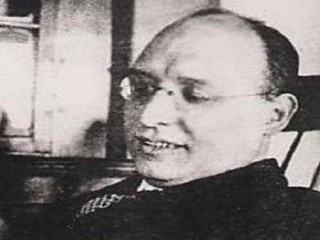
George Sarton biography
Date of birth : 1884-08-31
Date of death : 1956-03-22
Birthplace : Ghent, Belgium
Nationality : Belgian
Category : Science and Technology
Last modified : 2011-05-11
Credited as : Chemist, and historian, Eleanor Noble Elives
The Belgian-born American historian of science George Sarton founded the history of science in America.
George Sarton was born in Ghent on Aug. 31, 1884, the son of one of the directors and chief engineers of the Belgian national railroad system. Sarton studied philosophy at the University of Ghent and then turned to science, winning his doctorate in mathematics in 1911. He had, however, already become known as an author and scientist for his published novels and poems and his award-winning essay on chemistry (1908). Sarton emerged from his training with admiration for the insights of Auguste Comte and Henri Poincare and a conviction that the basis of scientific philosophy was the history of science.
Sarton married an English artist, Eleanor Noble Elives, in 1911. In March 1913 he published the first issue of Isis, a journal of the history of science. At the beginning of World War I he fled to Holland, then to England, and, finally, to the United States. He arrived in 1915 and lectured at Harvard from 1916 to 1918, the first academic year in philosophy and the second in history of science. The appointment was not a regular one, and he was supported in the main by friends. The Lowell Lectures at Harvard in 1916 started Sarton on his lifetime project of tracing the history of science to Leonardo da Vinci.
The Carnegie Institution in Washington appointed Sarton a research associate in 1918, thus making him economically secure. He remained at Cambridge and, beginning in 1920, gave a course on the history of science in exchange for library space at Harvard. Meanwhile, he had published the second issue of Isis in September 1919. Sarton became an American citizen in 1924 and helped found the History of Science group the same year.
Sarton's major work, Introduction to the History of Science, consists of From Homer to Omar Khayyam (1927), From Rabbi Ben Ezra to Roger Bacon (1931), and Science and Learning in the 14th Century (1947-1948). During this time he went to North Africa and the Near East (1931-1932) to study Arabic and Islam; founded Osiris (1936), a journal designed for articles longer than those in Isis; and wrote and lectured.
In his writings Sarton used the model of a map maker. He combined biography and science, using secondary sources. As a result, he slighted Egyptian and Babylonian sources and relied heavily on Greek and medieval Arabic ones, which were more available to him. All of his works emphasized the continuity of science and its close affinity with magic.
Sarton officially became professor of the history of science at Harvard in 1940 and retired in 1951. He continued to lecture and write until his death on March 22, 1956.
















